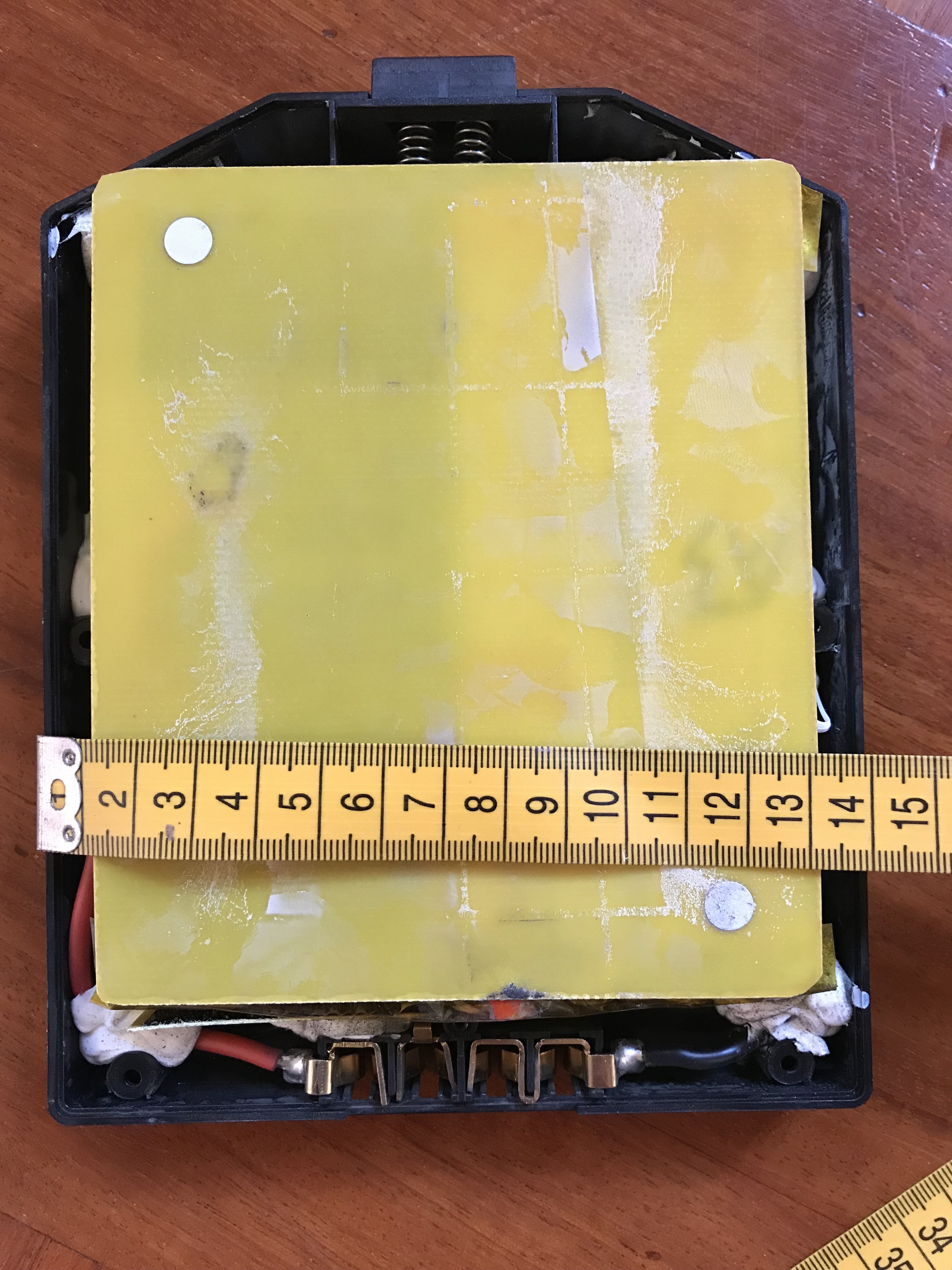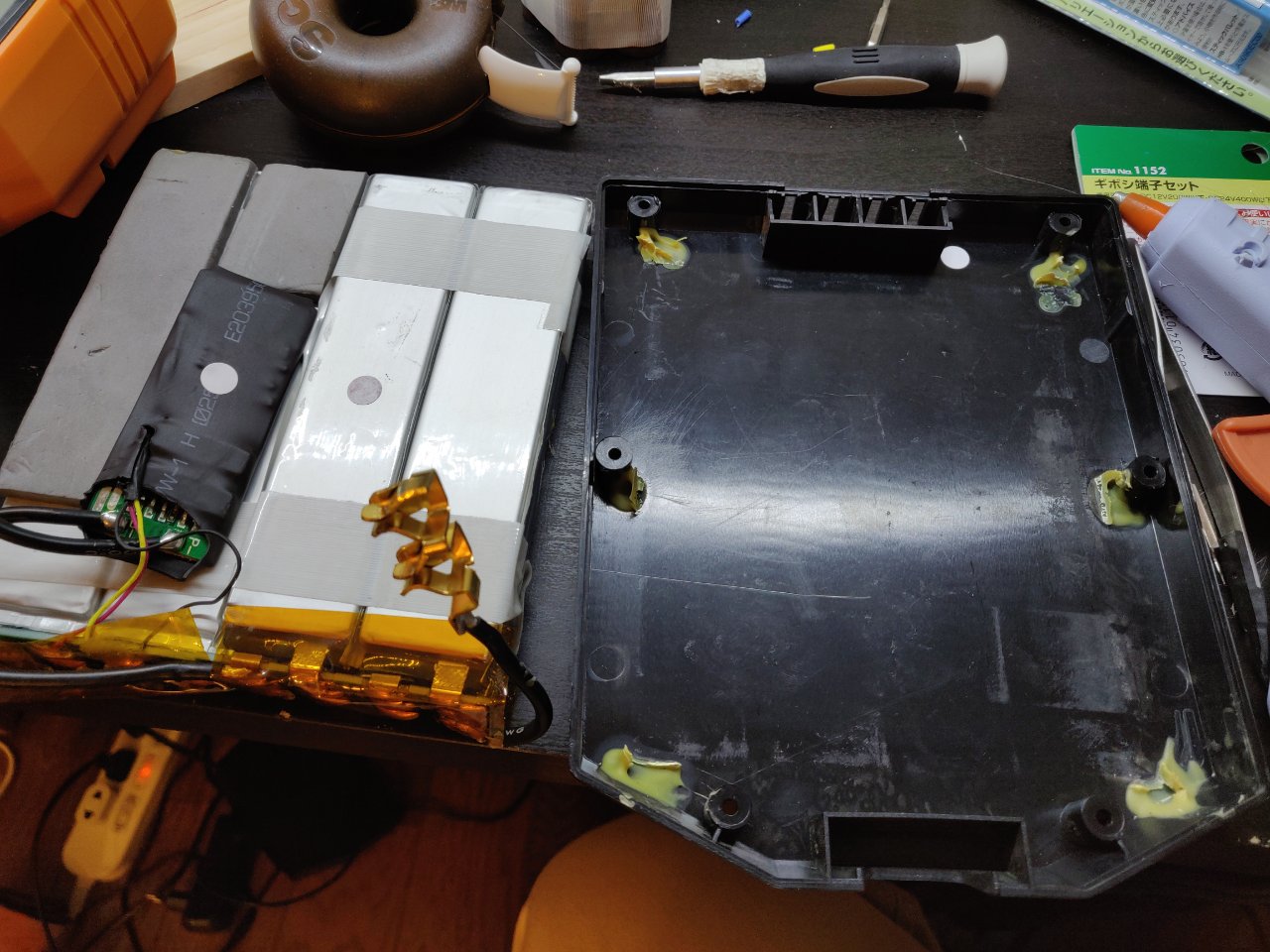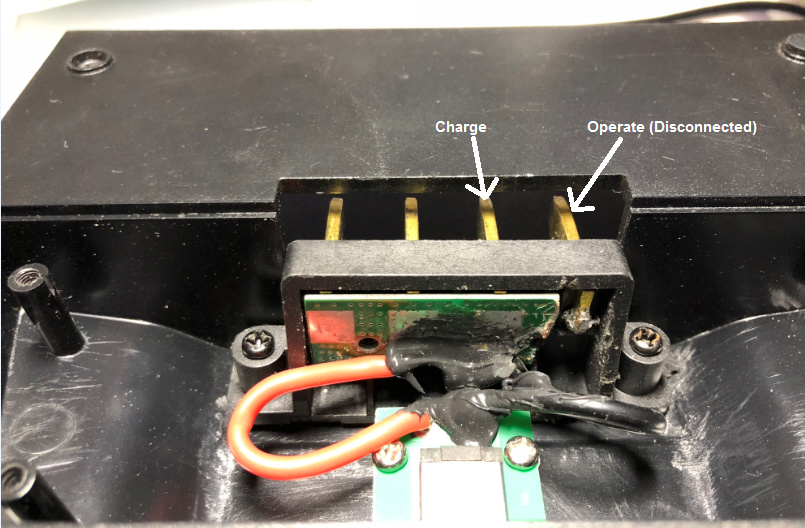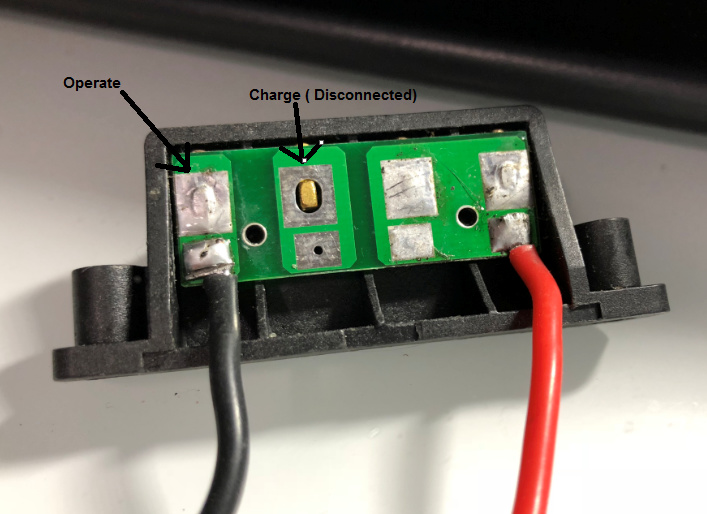Never tried since I don’t really like to deal with batteries. Do post pictures if you attempt it. I don’t see why 10 cells and a small BMS wouldn’t fit in that space. I do wonder how charging would work
I too would be interested in seeing a sucessful cell replacement.
Here is another approach.
I’d like to try this with rigid batteries. Its on my list of things to do to go to the public library and 3D print a rigid battery mount.
Dewalt is another option
Alright guys, I finished inspecting the dead battery 
here are some pictures:




Looks like we got 14.2 cm x 12.1 cm x 2.4 cm of room to play around defnitely enough room for 10S 18650 and a BMS. I am planning to fit it with Samsung 30Q, what do you think? Since it is only 1P, I am really concern about the voltage sag.
hey @Goldenic
Is it a V5 battery pack?
I opened the V3 battery pack.
It was put with a powerful double-sided tape.

For 18650 cells there is space to place BMS.

For 21700 cells there is no space to place BMS.

@esk8jpn yes it is the V5 battery. Did you complete the cell swap on your V3? How was the fit?
I am really wondering if 30Q(15A) is enough to power the motor or I should go with the much higher amp like Sony VTC6(30-35A). I personally don’t want to go with VTC6 because I read that it doesn’t hold its capacity well, but if that is the only way to go then it is what it is 
Not yet finished. I opened just now.  I think that a serious voltage sag will occur in 30Q 10s1p configuration.
I think that a serious voltage sag will occur in 30Q 10s1p configuration.
I am considering using 21700 cells and placing the small BMS outside the battery case.
Hi folks, I’m new to the forum, this is my first post. (Been hiding in the bushes reading your awesome tips and comments)
I’ve had my Landwheel l3x v5 for around a month and I’m loving it, i mainly use it for commuting to work each day.
I have had couple issues you which folks have already discussed (plastic housing stripping and wheels cracking) which I have fixed thanks to your tips and ideas.
One issue I’ve not seen mentioned is one of my hubs is rattling (the bolt in the middle seems to have come loose).
I’ve taken the wheel bit off but not been able to tighten the bolt as a normal wrench won’t fit around the nut as there’s not much space around it.
I’ve ordered a set of box spanners to tighten it but was wondering of any if you guys has disassembled the hub motor? And if you think I’d be better disassembling the hub motor then tightening it or if you think the box wrench will work?
Any tips or suggestions would be great.
Thanks and hello again.
Check the bag of tools that came with your L3-x. It usually includes a special tool for tightening the hub motor axle nut. Its a socket wrench with a very thin wall.
If you don’t have the tool then it is possible to make one. Purchase a good quality 13mm or 1/2 inch socket wrench, mount it on a drill or impact wrench and spin it against a running belt sander to grind down the walls of the socket wrench.
You could start with something like this but I think you would still need to grind down the walls thinner
Here is another potential source: https://www.grainger.com/category/ecatalog/N-/Ntt-thin+wall+wrench
If you want do do things on the cheap, you could grind the plastic off of a skateboard wrench and then grind down the walls of the axle nut socket as described above.
If you have multiple Landwheel batteries then once you replace the internals on the battery, you could mount two of your modified batteriesin parallel. I’m not sure if you have spare parts left over from an old V3 or V4. If you do, wiring the batteries in parallel may give you the capacity you need to prevent voltage sag.
Another approach might be to make an ABS spacer with the same shape as the battery. You might be able to make the spacer thick enough to to allow for two rows of batteries. I’m suggesting doubling the height of the battery by making a spacer that sits between the top and bottom halves of the battery case.
Keep in mind that the L3-x has a split terminal on one side. One terminal is for charging through the BMS. The other terminal is for powering the Landwheel and for regenerative braking. I’m not sure if it’s true but one person wiht some battery and BMS expertice previoulsy wrote that the second terminal bypasses the BMS and runs straigh to the battery.
I believe this wiring is important for two reasons:
-
When the L3-x is braking, it needs a battery available to absorb the charge. If the BMS cuts off the battery and there is no place for the regen current to go then the L3-x ESC can be fried. Bypassing the BMS ensures that the battery is always available
-
This may or may not be true, but the highly responsive acceleration of the L3-x may in part be due to its power being drawn directly from the battery (not via the BMS).
Cheers for the info mate, if the box spanners don’t work I’ll defo look into the thin wall impact spanner.
I’ll let you know how I get on.
Woods
Thanks for the detailed advice mate but unfortunately, I don’t think I have the skill necessary to modify the case nor making the parallel battery case, so maybe I’ll go with 18650 as @esk8jpn laid out. I’ll try with VTC5a and report back 
This is how you wire two bateries in parallel. Positive to positive, negative to negtive, just like boosting a dead car battery.

Obviously you need a second landwheel chasis for this.
here is a picture of me adding 1/4 inch to the height of a V2 landwheel case.

Something similar could be done with the battery case. You do need a few tools including a band saw or scroll saw to cut the ABS, a heat gun (with precision tip) to bend the strip, a solvent applicator and Acetone. Plastic shops sell the plastic, solvent applicators and they also sell solvent blends that are slightly better at bonding than acetone.
A plastics shop could also cut the strip of ABS fo you if you do not have a saw.
I suppose someone with 3d Design skills and a 3D printer could draw up an upper shell that is deeper than the landwheel battery shell. Then print it off at the local library. In Ottawa, the local library lets you do 3D printing for the cost of materials. Not sure if that service is available in other cities.
Ich habe dasselbe Problem mit dem Land will 2km läuft’s gut danach wird es echt gefährlich ich wiege 100 Kilo und meine Söhne haben überhaupt keine Probleme mit diesem Board können fahren wie sie wollen es schneidet nie aus trotzdem mag ich dieses Board es ist eines von dreien was ich habe ich habe einen Spannungsprüfer montiert und konnte beobachten wie halt die Volt zahlen hoch oder runter gehen es ist einfach zu schwanken das ist das Problem bis 70 kg danach echt gefährlich
Question Translated to English… I’m having the same problem with in my country. 2 km is fine then it gets really dangerous for me. I weigh 220 pounds. My sons have no problems with this board can ride as they want. It never cuts out for them. Anyway I like this board it’s one of three that I have. I have a voltage tester mounted and could watch how the volts go up or down. Teh voltage does not fluctuate much for riders to 70 kg after that really dangerous.
English response… (Siehe Übersetzung nach Deutsch unten) Germane: You are correct. With a heavy rider voltage sag is a problem. Lighter riders don’t have this problem.
I also weigh 220 pounds (100 kg). I find the battery is too small for my weight. The range is too short. You never want to ride past the third flashing blue dot. NEVER ride on the red dot. The battery can be damaged if you ride the battery past these warnings.
Cold weather also shortens the range. So the weather in germany may not be helpful this time of year.
My first solution was to mount two batteries in parallel. This works well as long as the batteries are from the identical model (L3-x). The other solution is to mount two drives on one board.
The other solution would be to leave the landwheel for your sons to ride. Just make sure the battery never drops below the third flashing light. This will protect the battery from damage. Riding in cold weather is not good for the battery. The voltage can drop suddenly.
Translated German Response Germane: Du hast Recht. Bei einem starken Fahrer ist die Durchbiegung ein Problem. Leichtere Fahrer haben dieses Problem nicht.
Ich wiege auch 220 Pfund (100 kg). Ich finde die Batterie ist zu klein für mein Gewicht. Die Reichweite ist zu kurz. Sie wollen nie über den dritten blinkenden blauen Punkt hinausfahren. Fahre NIEMALS auf dem roten Punkt. Die Batterie kann beschädigt werden, wenn Sie die Batterie über diese Warnungen fahren.
Kaltes Wetter verkürzt auch die Reichweite. Also das Wetter in Deutschland kann zu dieser Jahreszeit nicht hilfreich sein.
Meine erste Lösung bestand darin, zwei Batterien parallel zu montieren. Dies funktioniert gut, solange die Batterien vom gleichen Modell (L3-x) sind. Die andere Lösung besteht darin, zwei Laufwerke auf einer Platine zu montieren.
Die andere Lösung wäre, das Rad für Ihre Söhne zu verlassen. Stellen Sie sicher, dass die Batterie niemals unter das dritte Blinklicht fällt. Dies schützt die Batterie vor Beschädigung. Fahren bei kaltem Wetter ist nicht gut für die Batterie. Die Spannung kann plötzlich abfallen.
Hello guys, amazing information here! thank you for sharind i will also leave here a video. i made a doble battery landwheel , tell me what do you think.
Awesome Idea. Brilliant! Its great how you can charge one battery right on your board. I think you solution will work well even though your spare battery is wired to the incorrect terminal. The Landwheel has a split negative terminal. One negative terminal is for charging through the BMS. The other negative terminal is for operating the landwheel. The operating terminal bypasses the BMS so that the regenerative current is never disconnected by the BMS. If that were to happen, the ESC can be damaged. Despite that wiring problem, I think your solution will work as long as the main battery is always inserted during operation. Your main battery is connected properly so your regenerative braking current will always have at least one battery to accept the current. Never ride your modified landwheel without a battery in the drive chasis. If you ride with the spare battery only, then you risk damage to your ESC during braking.
With some small wiring changes, you could double your regenerative braking capacity. You could also add a wire so that you could charge both batteries at the same time.
If you disassemble the charging dock, you will see that the outer black terminal is disconnected. That’s the operating terminal. The inner black terminal is the charging terminal.

If you disassemble the landwheel drive and remove the shell, you will see that the inner black terminal is disconnected. That is the charging terminal.

So if you want both battereis to always be available for regenerative current And if you want to be able to charge both batteries at the same time…
You would make these three hard wired connections with a soldering iron…
- Negative charging terminal to negative charging terminal
- Negative operating terminal to negative operating terminal
- Red positive terminal to red positive terminal.

When you plug your charger in to the port on the charging dock, I think both batteries would charge at the same time.
Pkasanda thank you só much for your feed back. Yes you’re right about the regenerative braking but I think it’s not worth it because I will always run with both batterys and the regenerative braking is not that efficient, even if we doble it. In case of charging both batterys, how can I charge both if I unplug the connection between then to insert the charging port? To do that I have do make a new plug into the middle battery connections right? Is also just connect negative to negative and positive to positive? Thank you one more time for your amazing response
The benefit would be that you would double the amount of down hill braking that you could do before you get the vibration alert. If you brake past the vibration alert, you can damage your ESC (or your battery or both). You would be adding more safety and reducing the possibility of damage.
When you leave your destination with two full batteries, its going to take longer for the power levels to drop. So you need to travel twice as far to get the same down hill braking capacity. Wiring both batteries to the operating port would allow you to safely brake down hill much earlier in your trip.
Also, the regenerative braking is much more efficient than you might think. It’s hard to tell how much battery range you are gaining from regenerative motor power when you have only one remote control. On my 4WD landwheel, I have not added a battery balancing wire yet.
So when one battery gets lower than the other, I adjust the remote linkage to put more load on the battery that has more power remaining. When I do this, the battery in the other drive quickly increases its power level becaue it is being pushed by the other drive.
Under these conditions, comparing battery lights on the two remotes, you can see that the regenerative power recapture is very efficient.
Also, the power recapture happens not just when braking. Any time you travel down hill, even a small hill, the motors are adding power to the battery, even when you are not braking. Braking down hill increases the amount of power going back in to the battery, but your speed and the distance you travel is decreased by the braking.
So your total range is not much different if you brake or don’t brake. But the regenerative properties of the motors are always maximizing your battery range.
Coasting to a slower spead on a flat surface has the same effect as traveling down hill. So any time you coast or travel down hill, the regenerative power is recharging your battery.
Braking puts power in to the battery faster but slows you down faster. So if you compare the same trip with and without braking the range without braking will be a bit longer. But that’s not measuring the efficiency of the regenerative motor power. Its only measuring the efficiency of coasting vs braking.
So in my proposal, you do not use the charging port to connect the two batteries. Using the charging port is improper wiring becasue it connects the operating black terminal on the drive to the charging terminal on the dock.
To do the wiring I have proposed, you need to drill some extra holes in the charging dock. Three wires go directly from the drive unit to the charging dock and all of the connections are soldered and permanent.
This leaves the charging port open when you drive. When you park and plug in the charging brick, power would travel to both batteries on the red and purple wires. Both batteries would charge. Each battery BMS would independently determine when to cut its battery off from the charger. The charger light would turn green when both battery BMS’s have disconnected from the charging terminal.
It would probably take twice as long to charge the batteries. But overnight charging would be simpler.
Of course, you would still have the option of charging one battery at a time if you remove one battery when charging.
If you omit the purple wire then you would have all of the regenerative braking and safety benefits. But you would have to charge one battery at a time in the charging dock.
If you decide to follow my wiring instructions, then you might want to invent a plug for the charging port or cover it with electrical tape. You want to avoid geting moisture and grit into the charging port. It will corrode quickly during charging if the contacts get scratched by grit or if the surfaces are moist.
